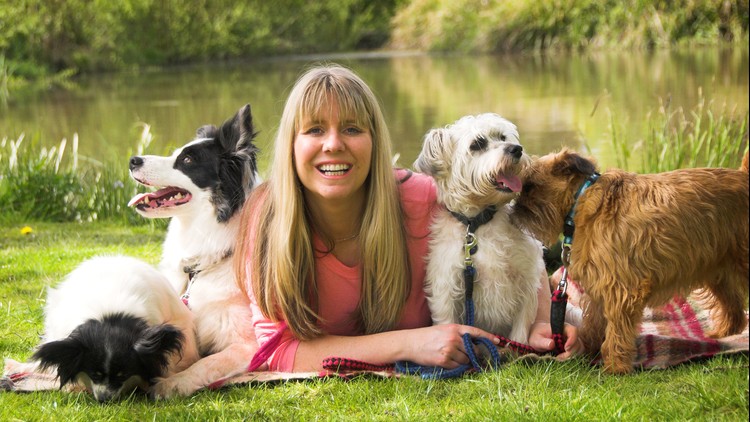Dogs are known for their loyalty, companionship, and ability to form strong bonds with humans. Many families choose to bring these four-legged friends into their homes, providing them not only with a loving environment but also the opportunity to interact with children. While the relationship between dogs and children can be incredibly rewarding, it also comes with its challenges. One of the most important skills to teach a dog in a household with children is how to remain calm and composed in their presence. In this article, we will delve into effective strategies and techniques to train dogs to be calm around children.
Understanding the Importance of Calmness
Before delving into the training methods, it’s essential to understand why teaching dogs to be calm around children is so crucial. Children often display unpredictable behavior – sudden movements, high-pitched noises, and erratic gestures. These actions might trigger a dog’s natural instincts, causing anxiety or excitement. Without proper training, a dog’s response to these triggers could range from fear to aggression, which can be dangerous in a household with children.
A calm dog not only ensures the safety of the children but also enhances the overall quality of life for both the dog and the family. When a dog is calm, they are more likely to enjoy positive interactions, form strong bonds, and feel comfortable within the family unit. It’s important to note that a calm dog is not a passive or submissive dog; instead, it’s a dog that can confidently navigate various situations without becoming overly agitated or stressed.
The Training Process
Training a dog to be calm around children requires patience, consistency, and positive reinforcement. It’s a gradual process that involves exposing the dog to controlled interactions with children and rewarding calm behavior. Here’s a step-by-step guide on how to achieve this:
1. Basic Obedience Training:
Before introducing your dog to children, make sure they have a solid foundation in basic obedience commands such as “sit,” “stay,” “down,” and “leave it.” These commands will provide you with better control over your dog’s behavior in various situations.
2. Desensitization:
Gradually expose your dog to the presence of children in controlled environments. Start with quiet, well-behaved children who are capable of following instructions. Allow your dog to observe the children from a distance while rewarding them for calm behavior. Over time, decrease the distance between the dog and the children.
3. Positive Associations:
Create positive associations between your dog and children by rewarding them with treats, praise, or toys during interactions. Whenever the dog remains calm around children, provide a reward. This conditions the dog to associate the presence of children with positive experiences.
4. Teach “Quiet” Command:
Train your dog to respond to a “quiet” command, which can be useful if your dog tends to bark excessively at children. Use treats to reward your dog for stopping barking on command. This command reinforces the dog’s self-control and helps maintain a peaceful environment.
5. Controlled Introductions:
Once your dog is comfortable with calm children, gradually introduce them to more active or energetic kids. Supervise all interactions closely and be ready to step in if either the dog or the child becomes uncomfortable.
6. Redirect Energy:
Dogs, especially young ones, have plenty of energy. Engage your dog in regular exercise and play sessions to release excess energy, making them less likely to become overly excited around children.
7. Create Safe Spaces:
Designate certain areas in your home where your dog can retreat to if they feel overwhelmed. Teach children to respect these spaces as “dog zones” where the dog can relax without being disturbed.
8. Consistency is Key:
Consistency is crucial in dog training. Ensure that all family members and visitors follow the same training principles. Mixed signals can confuse the dog and hinder their progress.
9. Monitor Body Language:
Teach children how to read a dog’s body language to understand when the dog is feeling uncomfortable or stressed. This empowers children to interact responsibly and avoid behaviors that might provoke the dog.
10. Professional Guidance:
If you encounter challenges during the training process or if your dog displays signs of aggression or extreme fear, consider seeking the help of a professional dog trainer or behaviorist. They can provide expert guidance tailored to your specific situation.
Common Mistakes to Avoid
In the process of training dogs to be calm around children, there are some common mistakes that should be avoided:
1. Rushing the Process:
Patience is vital. Rushing the training process can lead to setbacks and create negative associations for both the dog and the children.
2. Ignoring Warning Signs:
It’s important to recognize warning signs that your dog is becoming stressed or uncomfortable. These signs include growling, barking, cowering, or attempts to retreat. Ignoring these signs can lead to escalated behavior.
3. Punishment-Based Methods:
Using punishment-based methods to suppress unwanted behavior can have negative consequences. It may lead to increased anxiety, fear, and aggression in dogs, especially around children.
4. Unsupervised Interactions:
Never leave a dog and a child alone together, especially during the initial stages of training. Always supervise interactions to ensure the safety of both parties.
Conclusion
Training a dog to be calm around children requires time, effort, and a deep understanding of both canine behavior and child dynamics. By following the step-by-step training process, being consistent, and avoiding common mistakes, you can create a harmonious and safe environment where your dog and children can coexist happily. Remember that each dog is unique, and the training timeline may vary. The ultimate goal is to foster a relationship between your dog and your children that is built on trust, respect, and a shared sense of calmness.






